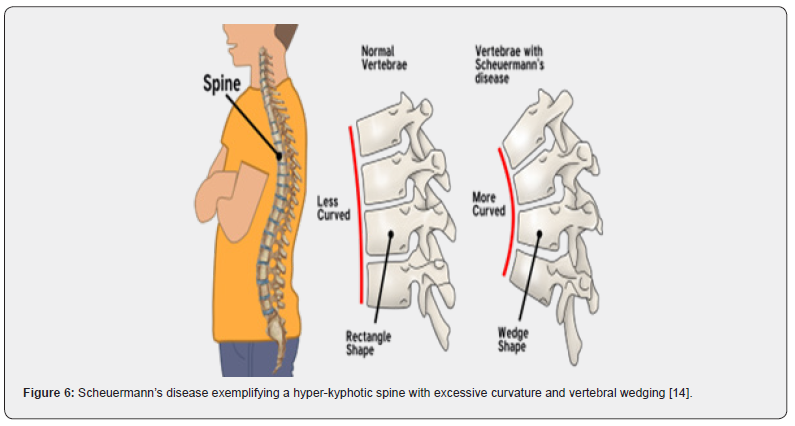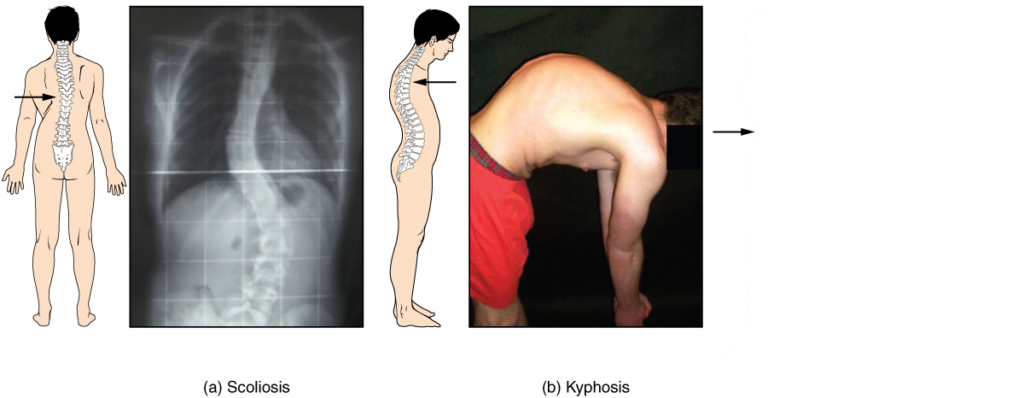Kyphosis, often referred to as hyperkyphosis in its more severe form, is a condition characterized by an excessive curvature of the upper back. This structural abnormality can lead to a rounded or hunched appearance, impacting both physical health and emotional well-being. In this article, we will explore the causes, symptoms, diagnosis, and treatment options for this condition, shedding light on how it affects individuals and what can be done to manage it effectively.

Understanding Kyphosis
Kyphosis is a term used to describe an exaggerated forward rounding of the upper spine. While some degree of curvature is normal in the thoracic region of the spine, kyphosis occurs when this curve becomes abnormally pronounced. The condition can affect people of all ages but is most commonly observed in older adults and adolescents.
Types of Kyphosis
- Postural Kyphosis: This type is often seen in adolescents and is usually caused by poor posture. It is not structural, meaning the bones of the spine are not deformed, and it can often be corrected with posture improvement exercises.
- Scheuermann’s Kyphosis: A structural form of the condition that typically develops during adolescence. It occurs when the vertebrae in the upper back grow abnormally, leading to a rigid curve that cannot be easily corrected.
- Congenital Kyphosis: Present at birth, this form of the condition arises due to improper development of the spine during fetal growth. It may worsen over time if left untreated.
- Age-Related Kyphosis: Often referred to as “dowager’s hump,” this type is common in older adults and is associated with osteoporosis and degenerative changes in the spine.
Causes of Kyphosis
The underlying causes of kyphosis vary depending on the type of the condition. Some of the most common factors contributing to the development of this spinal abnormality include:
Poor Posture
In cases of postural kyphosis, slouching or maintaining poor posture over long periods can strain the muscles and ligaments of the back, leading to an exaggerated curve. This type is reversible with proper posture training and exercises.
Osteoporosis
Osteoporosis, a condition characterized by weakened bones, is a major contributor to age-related kyphosis. As bone density decreases, the vertebrae in the spine become more susceptible to compression fractures, causing the spine to curve forward.
Developmental Abnormalities
Congenital kyphosis occurs when the spine does not develop properly before birth. This may result from malformation of the vertebrae, which can cause the spine to curve excessively as the child grows.
Trauma or Injury
Accidents or injuries that damage the spine can also lead to kyphosis. For example, fractures or dislocations of the vertebrae can alter the natural alignment of the spine, resulting in an abnormal curve.
Degenerative Diseases
Conditions such as arthritis or degenerative disc disease can contribute to the development of kyphosis. These diseases cause wear and tear on the spinal structures, leading to misalignment and curvature over time.
Symptoms of Kyphosis
The symptoms of kyphosis can range from mild to severe, depending on the extent of the curvature and the underlying cause. Common signs and symptoms include:
- A visibly rounded or hunched upper back
- Mild to severe back pain
- Stiffness in the spine
- Fatigue or muscle weakness
- Difficulty breathing in severe cases, due to pressure on the lungs
- Numbness, tingling, or weakness in the legs (in cases where nerve compression occurs)
In children and adolescents, kyphosis may also lead to self-consciousness or emotional distress due to the noticeable change in posture.
Diagnosing Kyphosis
Diagnosing kyphosis involves a combination of physical examinations, medical history reviews, and imaging tests. Healthcare providers use these tools to determine the severity of the curvature and identify any underlying conditions that may be contributing to the problem.
Physical Examination
During a physical examination, a doctor will assess the patient’s posture, spine alignment, and range of motion. They may ask the patient to bend forward to observe the curvature more clearly. This test, known as the Adam’s forward bend test, is particularly useful in identifying Scheuermann’s kyphosis.
Medical History
A thorough review of the patient’s medical history helps identify potential risk factors, such as a family history of spinal conditions, previous injuries, or the presence of osteoporosis. This information is crucial for determining the most appropriate treatment plan.
Imaging Tests
X-rays are the most commonly used imaging tool for diagnosing kyphosis. They provide detailed images of the spine, allowing doctors to measure the degree of curvature and assess the condition of the vertebrae. In some cases, additional imaging tests such as magnetic resonance imaging (MRI) or computed tomography (CT) scans may be required to evaluate soft tissues or rule out other conditions.
Treatment Options for Kyphosis
The treatment approach for kyphosis depends on the type and severity of the condition, as well as the age and overall health of the patient. In many cases, a combination of non-surgical and surgical interventions is used to manage symptoms and improve quality of life.
Non-Surgical Treatments
For mild to moderate cases of kyphosis, non-surgical treatments are often effective in managing symptoms and preventing further progression of the condition.
Physical Therapy
Physical therapy plays a key role in strengthening the muscles that support the spine and improving posture. A physical therapist may design a personalized exercise program that includes stretching, core-strengthening exercises, and posture correction techniques.
Bracing
In adolescents with Scheuermann’s kyphosis, wearing a back brace may help prevent the curvature from worsening as the spine continues to grow. Braces are typically worn for several hours a day and are most effective when used early in the course of the condition.
Pain Management
Over-the-counter pain relievers, such as ibuprofen or acetaminophen, can help alleviate discomfort associated with kyphosis. In cases of chronic pain, a doctor may recommend prescription medications or injections to reduce inflammation and relieve symptoms.
Surgical Treatments
Surgery is generally reserved for severe cases of kyphosis that do not respond to conservative treatments or pose a risk to the patient’s health. The primary goal of surgery is to correct the curvature, stabilize the spine, and alleviate symptoms.
Spinal Fusion
Spinal fusion is the most common surgical procedure for treating kyphosis. During this operation, two or more vertebrae are fused together using bone grafts and metal rods or screws. This helps straighten the spine and prevent further curvature.
Vertebroplasty or Kyphoplasty
These minimally invasive procedures are used to treat compression fractures caused by osteoporosis. Vertebroplasty involves injecting a special cement into the fractured vertebrae to stabilize them, while kyphoplasty uses a balloon-like device to restore height before injecting the cement.
Lifestyle Modifications for Managing Kyphosis
In addition to medical treatments, certain lifestyle changes can help individuals manage the symptoms of kyphosis and improve their overall well-being.
Maintaining Good Posture
Practicing good posture is essential for preventing and managing kyphosis. Simple adjustments, such as sitting up straight, keeping shoulders relaxed, and avoiding prolonged periods of slouching, can make a significant difference.
Regular Exercise
Engaging in regular physical activity helps strengthen the muscles that support the spine and improves flexibility. Low-impact exercises such as swimming, yoga, and walking are particularly beneficial for individuals with kyphosis.
Bone Health
For those with osteoporosis-related kyphosis, maintaining strong bones is critical. Consuming a diet rich in calcium and vitamin D, along with taking prescribed medications, can help slow bone loss and reduce the risk of fractures.
Emotional and Psychological Impact
Kyphosis can have a profound impact on an individual’s emotional and psychological well-being. The visible changes in posture may lead to feelings of self-consciousness, low self-esteem, or social withdrawal. Adolescents, in particular, may struggle with body image issues and peer acceptance.
Seeking support from mental health professionals, joining support groups, or participating in counseling sessions can help individuals cope with the emotional challenges associated with the condition. Encouragement from family and friends also plays a vital role in fostering resilience and confidence.
Prevention Strategies
While not all forms of kyphosis can be prevented, certain measures can reduce the risk of developing the condition or prevent its progression.
- Encourage children and adolescents to maintain good posture and engage in regular physical activity.
- Monitor bone health through regular check-ups, especially for individuals at risk of osteoporosis.
- Address any signs of poor posture or back pain early to prevent complications.
- Educate older adults about fall prevention strategies to minimize the risk of spinal fractures.





